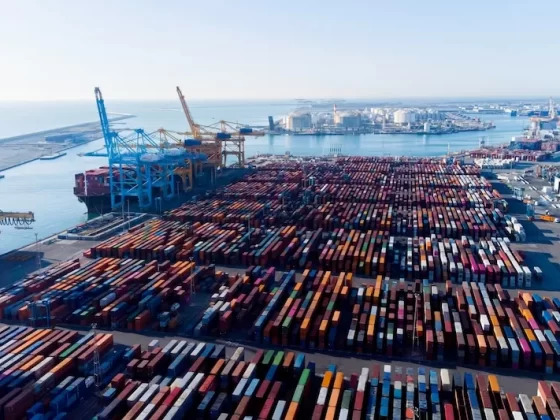Extreme weather events, such as the recent flooding in Central Europe, offer a stark reminder of the growing threat posed by climate change. But does the increasing frequency and ferocity of extreme weather threaten future travel? It’s a question that deserves a closer look.
As climate change intensifies, the impact on travel and tourism is becoming clearer. From natural disasters to shifting weather patterns, travelers may well face more frequent weather disruptions.
The Weather’s Getting More Extreme
Climate change has altered the earth’s weather patterns, leading to more frequent and severe weather events. The recent floods across Central Europe, triggered by Storm Boris, are a prime example. Torrential rains inundated cities, disrupted transport systems, and displaced tens of thousands of people.
Climatologists say these types of storms will become more likely as global temperatures rise. The meeting of cold Arctic air with warm Mediterranean air, fueled by warmer-than-usual sea temperatures, creates the perfect conditions for devastating storms like Boris.
And the pattern is not unique to Europe. Around the globe, extreme weather—ranging from hurricanes to heatwaves—is becoming more common. Whether it’s the devastating wildfires in Australia and California or hurricanes sweeping across the Caribbean and Gulf Coast, travelers are increasingly exposed to significant risk—besides overcrowding.
Transport and Travel Disruptions
The most immediate impact is the disruption to travel infrastructure. Europe’s floods shut down transit systems, submerged roads, and damaged airports and railways. Such disruptions make it difficult for tourists and business travelers to continue with their plans.
Power outages are another common consequence of extreme weather, and often affect everything from hotel operations to air traffic control. During the recent floods, for instance, entire towns were evacuated and thousands of people were stranded.
Countless tourists were forced to flee or redo their itineraries. Meanwhile, cities like Venice and Florence, already prone to flooding, are seeing such events happen more frequently, threatening their status as tourist destinations.
Air travel is not immune. In recent years, airports have been closed due to storms, with flights delayed or canceled, and passengers stranded. Extreme weather can also affect air travel safety, as severe turbulence, lightning strikes, and strong winds worsen.
As climate change accelerates, the probability of severe weather impacting flights and flight schedules grows, threatening to disrupt short-term and long-term travel plans. But let’s keep in mind that travelers have been dealing with flight delays and cancellations, power outages, transport problems and more for ages, and only in rare cases does it truly imperil a trip.
Also Read: Post Summer Travel Necessities
Destinations at Risk?
Many popular travel destinations are particularly vulnerable to extreme weather. Coastal areas are at heightened risk of rising sea levels and flooding. The Maldives, Miami, and Venice are already grappling with the effects of climate change, and future travelers may find these destinations increasingly unsafe or inaccessible. This explains the emergence of “last-chance travel” – visiting places that may not be around much longer.
Outdoor adventures, such as hiking, camping, fishing, and mountain biking journeys, could also be imperiled by major storms and wildfires, as well as heatwaves. Winter travel, too, is under threat as warming temperatures shorten ski seasons and reduce snowfall in traditional winter sports hubs.
European destinations such as the Alps are experiencing unpredictable weather patterns, making it difficult for ski resorts to operate consistently. As these weather events become more frequent, they may reduce demand for winter travel, harming local economies that rely heavily on tourism.
Even natural wonders like the Great Barrier Reef could be in trouble. Rising ocean temperatures have led to coral bleaching, endangering the reef’s delicate ecosystem.
Economic and Social Implications
The economic impact of extreme weather on travel is significant. Many countries, particularly those with tourism-dependent economies, are already feeling the financial strain of climate-induced disruptions. This year’s floods are set to cost Poland more than 5 billion euros, which would be its most costly weather disaster in nearly 30 years.
In addition to the costs of repairing damaged infrastructure, countries must also cope with lost revenue from reduced tourism. The social implications of extreme weather and climate change are equally concerning. Local populations often face displacement, as seen in the recent European floods.
The tourism industry, a major source of employment in many regions, could be severely impacted as extreme weather events become more frequent. Job losses would only exacerbate the challenges faced by communities vulnerable to the effects of climate change.
Furthermore, extreme weather not only affects the physical ability to travel but also the willingness of travelers to take risks. With growing awareness of climate change, potential tourists may reconsider destinations that are prone to extreme weather events, seeking safer alternatives. This shift in travel behavior could further strain areas dependent on tourism, leading to long-term economic decline.
Adaptation and Mitigation
In response to these challenges, experts argue for urgent adaptation and mitigation efforts. Improved urban planning, green infrastructure, and advanced storm management systems are essential for building resilience against extreme weather events.
For example, replacing impermeable concrete surfaces with permeable materials and planting more trees can help manage floodwaters and reduce damage. Early warning systems for travelers are another critical adaptation strategy. Already there are weather-prediction platforms that are able to reimburse travelers willing to pay for storm-protection coverage in advance.
A Dose of Travel Uncertainty
Extreme weather seems to pose a growing threat to future travel. The increased frequency and severity of storms, floods, and heatwaves will likely continue disrupting travel infrastructure and destinations, affecting tourists and local communities.
As climate change progresses, travelers will face greater uncertainty and risk, and the tourism industry will need to adapt to survive. Even so, our journeys will remain worth taking.
It may be wise, however, to prepare for a world where extreme weather is an ever-present threat.
EA Editorial Staff










